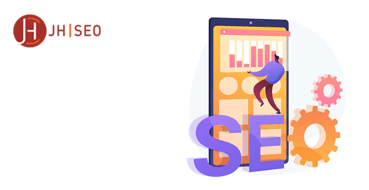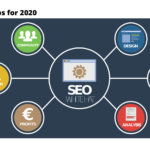In the competitive world of ecommerce, creating SEO-optimized content is crucial for driving organic traffic and boosting sales. Well-crafted SEO content not only improves search engine rankings but also enhances user experience, making it easier for customers to find and engage with your products. Here are the essentials of writing effective SEO content for your ecommerce website, from understanding your audience and crafting compelling product descriptions to leveraging user-generated content and optimizing media. By following these strategies, you can elevate your online presence and achieve sustained growth in the digital marketplace.
Understanding Your Audience
Identifying Target Demographics and Buyer Personas
To create content that resonates with your audience, you first need to understand who they are. Start by identifying your target demographics, including age, gender, location, income level, and interests. Develop detailed buyer personas that encapsulate these demographics and their preferences, shopping behaviors, and pain points. This will help tailor your content to meet their specific needs and preferences.
Conducting Keyword Research to Understand Search Intent
Keyword research is crucial for understanding what your potential customers are searching for. Use tools like Google Keyword Planner, SEMrush, or Ahrefs to find target keywords relevant to your products and niche. Focus on understanding the search intent behind these target keywords—are users looking for information, or are they ready to make a purchase? This insight will guide your content creation process.
Analyzing Competitor Content for Insights
Competitor analysis provides valuable insights into what’s working in your industry. Examine the top-performing content of your competitors to identify common themes, keyword usage, and content structure. Look for gaps in their content that you can fill and find ways to differentiate your offerings.
Crafting Compelling Product Descriptions
Incorporating Relevant Keywords Naturally
Keywords should be seamlessly integrated into your product descriptions to enhance search engine optimization without compromising readability. Use primary keywords in the product title, description, and meta tags, but avoid keyword stuffing. Aim for a natural flow that provides value to the reader.
Highlighting Unique Selling Points and Benefits
Your product descriptions should clearly highlight what makes your product unique and why customers should choose it over others. Focus on the benefits and features that address the needs and pain points of your audience. Use persuasive language to emphasize the value your product offers.
Writing Clear and Concise Descriptions for Easy Comprehension
Avoid overly complex language and lengthy paragraphs. Keep your descriptions clear, concise, and easy to understand. Use bullet points to list key features and benefits, making it easy for customers to scan and find the information they need quickly.
Creating Engaging Category Pages
Structuring Content for Usability and SEO
Category pages should be well-organized and easy to navigate. Use a clean and intuitive layout that allows users to quickly find the products they are looking for. From an SEO perspective, ensure each category page has a unique title tag, meta description, and URL structure that includes relevant keywords.
Utilizing Descriptive Headings and Bullet Points
Headings and bullet points enhance the readability of your category pages and make it easier for search engines to understand the content. Use descriptive H1 and H2 headings that include keywords to guide users through the page. Bullet points can break up text and highlight important information.
Incorporating Internal Links to Related Products and Content
Internal linking is an effective ecommerce SEO strategy that improves the user experience and helps search engines crawl your site. Link to related products, blog posts, or guides within your category pages. This not only keeps visitors on your site longer but also helps distribute link equity, boosting the SEO of your other pages.
Implementing Blogging Strategies
Generating Content Ideas Relevant to Your Products and Industry
A blog can significantly enhance your site’s SEO by attracting organic traffic through informative and engaging content. To generate content ideas:
- Identify common questions and pain points of your target audience.
- Keep up with industry trends and news to create timely and relevant posts.
- Use tools like Google Trends, BuzzSumo, and AnswerThePublic to discover popular topics.
Align your content with your products to naturally incorporate mentions and links.
Writing Informative and Engaging Blog Posts
Engaging blog posts should provide value to your readers. Use a conversational tone, break up text with headings and bullet points, and include visuals to make the content more appealing. Ensure your posts are well-researched, factually accurate, and provide actionable insights.
Optimizing Blog Content with Keywords and Internal Links
Incorporate relevant keywords naturally throughout your blog posts. Use primary keywords in the title, headings, and meta descriptions, and sprinkle secondary keywords within the content. Internal linking to related products, categories, and other blog posts improves site navigation and distributes SEO value across your site.
Leveraging User-Generated Content
Encouraging Customer Reviews and Testimonials
Customer reviews and testimonials are powerful forms of social proof that can influence purchasing decisions. Encourage customers to leave reviews by:
- Sending follow-up emails post-purchase.
- Offering incentives such as discounts or loyalty points.
- Making it easy to leave reviews on your site.
Showcasing User-Generated Content on Product Pages
Highlighting user-generated content (UGC) on product pages can enhance credibility and engagement. Display reviews, photos, and testimonials prominently. Create a section for featured UGC or integrate social media feeds showcasing customer posts.
Engaging with Customers to Foster Community and Loyalty
Build a loyal customer base by actively engaging with your audience. Respond to reviews, comments, and social media mentions. Create a sense of community through interactive content such as Q&A sessions, live streams, and forums. Recognize and reward loyal customers to strengthen relationships.
Optimizing Media Content
Using High-Quality Images and Videos to Enhance Product Presentations
High-quality images and videos are crucial for showcasing your products effectively. Ensure all media is professionally shot and accurately represents the product. Use multiple angles and close-ups to provide a comprehensive view.
Optimizing Image Alt Tags and Filenames for SEO
Optimize images by:
- Using descriptive, keyword-rich filenames.
- Adding alt tags that accurately describe the image and include relevant keywords.
- Compressing images to improve page load times without sacrificing quality.
Creating Video Content for Product Demos, Tutorials, and Reviews
Video content can significantly boost engagement and conversion rates. Create videos that:
- Demonstrate product features and usage.
- Provide tutorials and how-tos.
- Include customer reviews and testimonials.
Optimize video content by using relevant keywords in titles, descriptions, and tags. Embed videos on product pages and share them across social media platforms to increase reach.
Incorporating SEO-Friendly URLs and Metadata
Crafting Descriptive and Keyword-Rich URLs
A well-structured URL is essential for both user experience and SEO whether it’s on-page SEO or technical SEO. Ensure your URLs are:
- Descriptive: Reflect the content of the page.
- Short: Avoid unnecessary words and keep them concise.
- Keyword-Rich: Include primary keywords relevant to the page content.
For example, instead of using a generic URL like www.yoursite.com/product12345, use www.yoursite.com/blue-widget.
Optimizing Meta Titles and Descriptions for Click-Through Rates
Meta titles and descriptions are critical for attracting clicks from search engine results pages (SERPs). To optimize them:
- Meta Titles: Keep them under 60 characters, include primary keywords, and make them compelling.
- Meta Descriptions: Keep them under 160 characters, summarize the page content, include a call-to-action, and incorporate relevant keywords.
An engaging meta description can significantly improve your click-through rate (CTR), leading to more traffic.
Implementing Schema Markup for Enhanced Search Results
Schema markup, also known as structured data, helps search engines understand your content better and can enhance your SERP listings with rich snippets. Use schema markup to:
- Highlight product details like prices, availability, and reviews.
- Enhance local SEO by marking up your business information.
- Improve visibility with rich results, such as FAQ sections and product carousels.
Implementing schema markup can improve your search visibility and attract more clicks.
Monitoring Performance and Iterating
Tracking Content Performance with Analytics Tools
Regularly monitor the performance of your content using analytics tools like Google Analytics, SEMrush, or Ahrefs. Key metrics to track include:
- Organic traffic
- Bounce rate
- Average session duration
- Pages per session
These metrics will help you understand how users are interacting with your content and identify areas for improvement.
Analyzing User Engagement Metrics and Conversion Rates
In addition to tracking basic metrics, delve deeper into user engagement and conversion rates. Look at:
- Engagement Metrics: Track how users engage with your content, such as social shares, comments, and time spent on the page.
- Conversion Rates: Measure the effectiveness of your content in driving conversions, whether it’s completing a purchase, signing up for a newsletter, or filling out a contact form.
Analyzing these metrics will help you understand the effectiveness of your content and identify opportunities for optimization.
Iterating and Optimizing Content Based on Data Insights
Use the insights gained from your analytics to iterate and optimize your content. This could involve:
- Updating outdated information
- Adding new keywords based on search trends
- Improving content structure and readability
- Enhancing calls-to-action to boost conversions
Continuous iteration based on data insights ensures that your content remains relevant, engaging, and effective in achieving your business goals.
By integrating these strategies, you can enhance your search engine rankings and improve user experience. Remember, SEO is an ongoing journey that requires continuous optimization and adaptation to stay competitive and meet your customers’ evolving needs. By focusing on these essential elements, you can drive more organic search traffic, boost conversions, and achieve long-term success in the digital marketplace. Start implementing these SEO strategies today and watch your ecommerce business flourish.



































































































































































































































